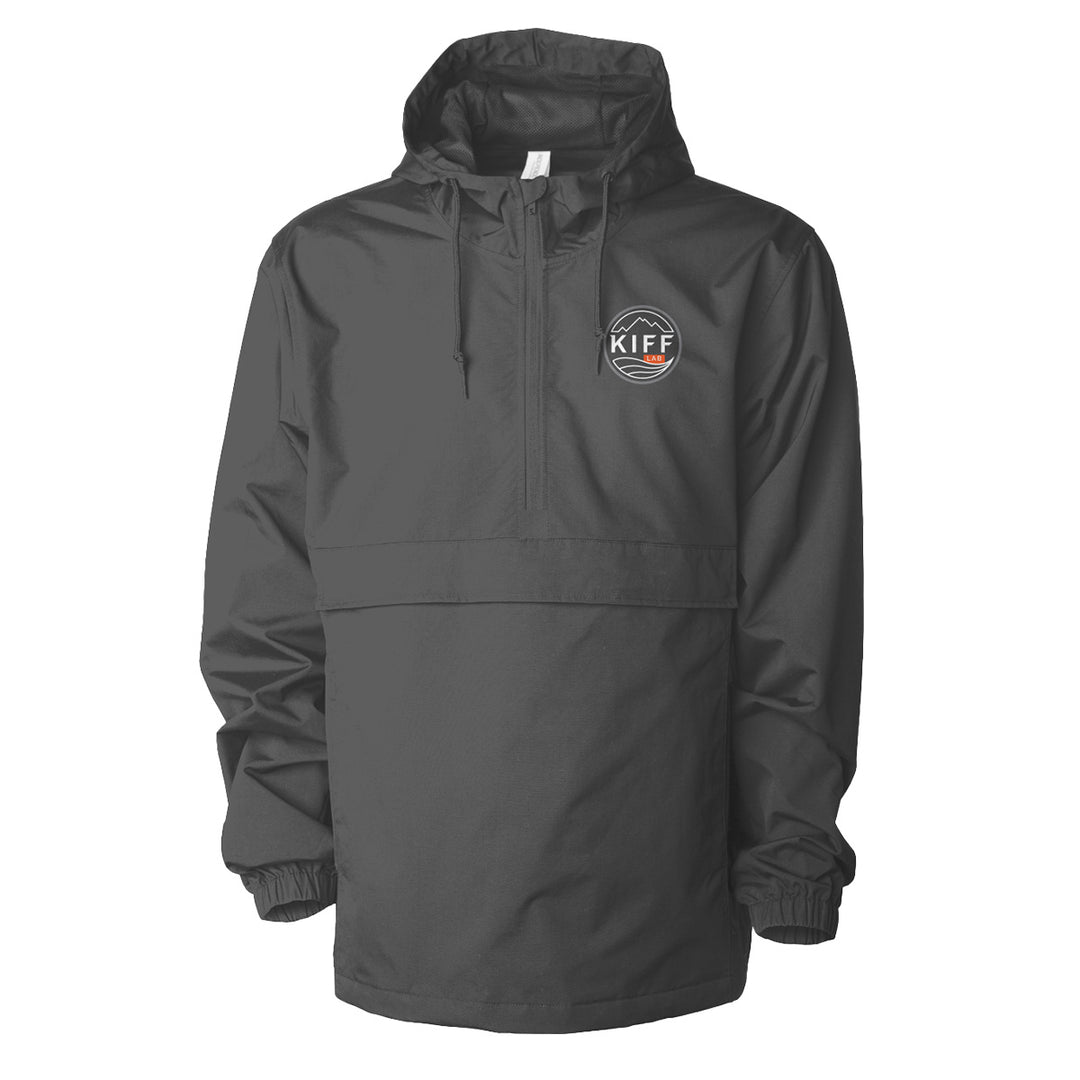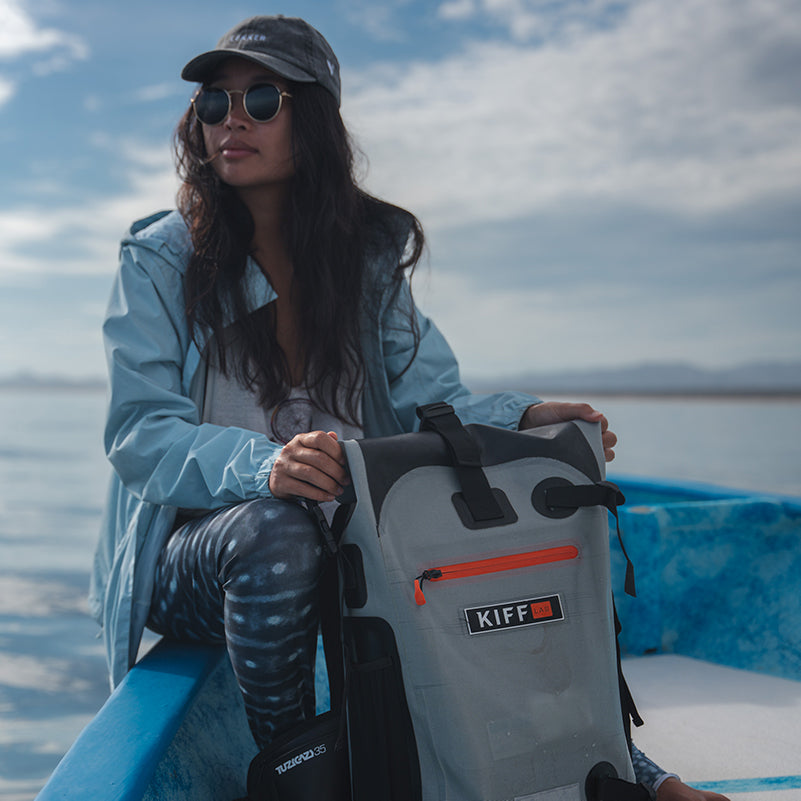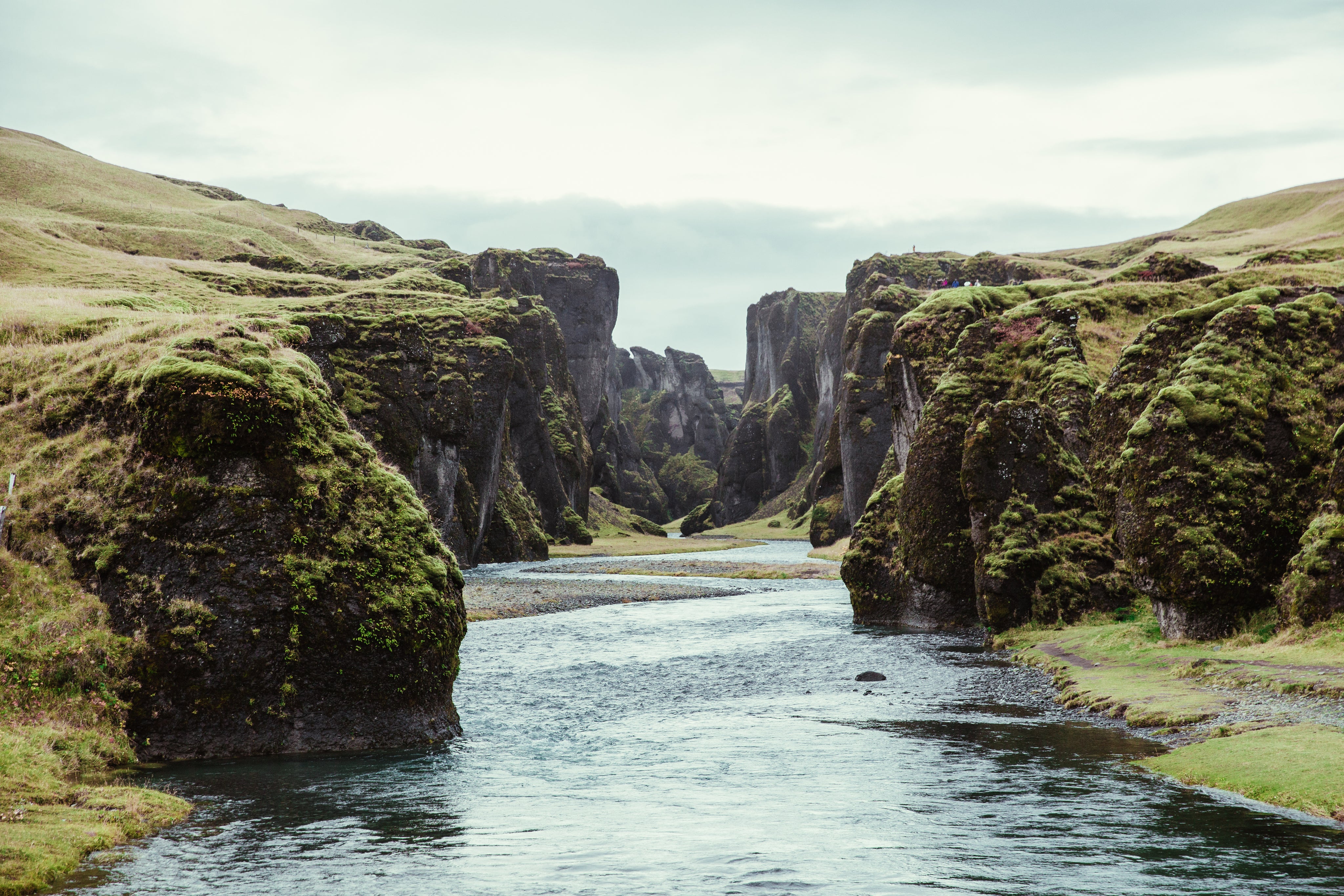Kayak Portage Tips
At KiffLab, we really enjoy our kayak trips, especially multi-day ones where portaging becomes part of the experience. We understand it can be a tough activity, but we also appreciate how enjoyable it can be.
- Identify Portage Points: Before setting out on your kayaking adventure, research the river you plan to navigate. Look out for potential portage points, which can be marked on maps or mentioned in guidebooks. These points indicate areas where you should exit the river and transport your kayak to bypass the obstacle.
- Assess the Obstacle: When you encounter an obstruction, carefully assess the nature of the obstacle. Is it a rapid, a fallen tree, or a dam? Understanding the type and severity of the obstacle will help you determine the best approach for portaging.
- Choose the Right Technique: Depending on the terrain and the weight of your kayak, you can employ various portage techniques. Some common techniques include using a shoulder carry, where you carry the kayak over your shoulder using a strap or a dedicated carrying device. You can also use a hand-truck or cart for ease of transport over longer distances.
- Prepare for Portage: Once you have decided on the portage technique, take the necessary steps to ensure a smooth process. Secure any loose items in your kayak, deflate the air chambers if necessary, and detach any accessories or equipment that may hinder the portage. It's important to be well-prepared to avoid delays and potential damage to your kayak.
- Work as a Team: If you are kayaking with others, coordinate your efforts during the portage process. Assign roles, communicate clearly, and support each other when carrying the kayaks. Working as a team will not only make the portage easier but also enhance safety and efficiency.
- Stay Alert and Mindful: As you transport your kayak, be aware of your surroundings and watch your footing. Uneven terrain, slippery surfaces, or hidden obstacles can pose risks. Take your time, stay focused, and always prioritize your safety and the safety of your fellow kayakers.

- Research your route: Before your trip, thoroughly research the river you will be navigating. Look for any potential portage points, obstacles, or challenging sections. This will help you identify the best areas to portage and plan your route accordingly.
- Pack smart: Take into account the weight and size of your kayaking gear. Aim to keep your equipment as lightweight and compact as possible for easier carrying during portages. Make sure to secure everything properly to avoid any loss or damage during the process. Smaller dry bags are more versatile than larger bulkier ones.
- Map out portage points: As you plan your journey, identify suitable points along the river where you can safely portage your kayak. Look for areas with gentle slopes, clear pathways, and sturdy ground for an easier and safer transition. It may be helpful to mark these points on your map or GPS device for quick reference.
- Consider equipment for portaging: Depending on the terrain and distance of the portage, you may want to consider using equipment specifically designed for kayak portaging. This can include kayak carts, shoulder straps, or lightweight wheels that attach to your kayak. These tools can make the process much more efficient and reduce the strain on your body.
- Be aware of weather conditions: Keep an eye on weather forecasts and be prepared for any changes in conditions. Heavy rain or strong winds can make portaging more challenging and even dangerous. Adjust your plans accordingly, ensuring you have proper rain gear and necessary precautions in place.
- Kayak Cart: A sturdy kayak cart is a must-have for river portaging. It allows you to easily transport your kayak over rough terrains and long distances without straining your back. Look for a cart that is lightweight, collapsible, and has large, durable wheels for smooth movement.
- Padded Shoulder Straps: Carrying your kayak on your shoulders during portage can be challenging without proper padding. Invest in padded shoulder straps that securely attach to your kayak, providing comfort and stability. These straps distribute the weight of your kayak evenly, making it easier to maneuver during portaging.
- Dry Bags: Protecting your gear from water is vital when kayaking. Opt for high-quality dry bags to keep your belongings safe and dry during portage and on the water. Choose bags with a roll-top closure system and durable material to ensure maximum waterproofing. Explore KiffLab’s range of premium dry bags.
- Tow Line: A tow line is essential for river portage situations where you may need to tow your kayak. Choose a durable tow line that is long enough and easy to attach to your kayak. This will come in handy if you encounter challenging sections or need assistance from fellow kayakers.
- Repair Kit: Accidents can happen during river portage, so it's always wise to have a repair kit on hand. Include items like duct tape, a multi-tool, extra straps, and patching material for quick fixes in case of emergencies.
- Whistle: A whistle is a crucial safety item that should never be overlooked. It serves as a communication tool to alert others to your presence, especially in case of emergencies. Keep a whistle easily accessible at all times during river portage.
- Plan ahead: Before embarking on your kayaking journey, research the river's path and identify potential areas requiring portage. Mark these locations on your map to ensure you're well-prepared.
- Choose the right equipment: Invest in a sturdy and lightweight kayak cart specifically designed for portaging. This will make transporting your kayak on land much easier and save you from unnecessary strain.
- Consider using dry bags: You will need to protect your belongings from water or other potential hazards during the portage. Dry bags will ensure that your gear stays dry and secure throughout the journey.
- Properly secure your gear: Before lifting your kayak, ensure that all your gear is securely strapped down. This will prevent any equipment from shifting or falling off during portage.
- Lift with your legs: When lifting your kayak, use your leg muscles rather than your back to minimize the risk of injury. Bend your knees, keep your back straight, and use your leg strength to lift.
- Use proper lifting technique: Place one hand on the cockpit rim and another on the edge of the seat or the bulkhead. Lift in one fluid motion, always keeping your body close to the kayak to maintain balance.
- Team up for larger kayaks: If you're portaging a larger kayak that feels too heavy to handle on your own, enlist the help of a fellow kayaker. Both of you can lift and carry it together, distributing the weight evenly.
- Take breaks and rest strategically: If the portage is long or demanding, set small goals for yourself and take breaks when necessary. Strategically plan your rest stops near shaded areas or comfortable spots to recharge.
- Practice your carrying technique: Experiment with different techniques to find the most comfortable and efficient carrying positions for your kayak. Some popular methods include carrying it on one shoulder or balancing it on your head.
- Stay hydrated: It's easy to forget about drinking water during the hustle of portaging, but remember to stay hydrated. Carry a water bottle with you and take regular breaks to replenish your fluids.
- Wear appropriate footwear: Choose sturdy footwear with good traction to navigate slippery or uneven terrains during the portage. Avoid open-toe shoes or sandals that may expose your feet to injuries.
- Maintain situational awareness: Keep an eye on your surroundings and adjust your portage technique accordingly. Be mindful of others sharing the trail and avoid accidents by communicating and yielding as necessary.
- Uneven Terrain
- Keep your kayak balanced and centered to maintain stability on uneven ground.
- Use caution when stepping over rocks or tree roots to avoid tripping.
- Take frequent breaks if the terrain is particularly challenging to conserve your energy.
- Steep Inclines
- Approach steep inclines at an angle to reduce the strain on your back.
- Take small, deliberate steps to maintain control and prevent slipping.
- If necessary, ask for assistance from a partner or fellow paddler to navigate difficult inclines.
- Narrow or Obstructed Pathways
- Assess the pathway carefully before attempting to maneuver your kayak through tight spaces.
- Clear any obstructions or debris that could impede your progress.
- Lift your kayak overhead if the pathway becomes too narrow, taking extra care not to damage your vessel.
- Inclement Weather
- Check weather conditions before embarking on your portage to anticipate any challenges.
- Dress appropriately and bring rain gear to protect yourself from sudden showers.
- Be cautious of slippery surfaces caused by rain or ice, adjusting your footwork as necessary.
- Fatigue
- Take breaks as needed to rest and hydrate during long portages.
- Use proper lifting techniques to avoid straining your muscles and conserve energy.
- Pace yourself and listen to your body's signals to prevent exhaustion or injuries.
- Observe and respect the natural surroundings: Take the time to understand and appreciate the beauty of the river environment. Observe any signs that highlight protected areas or delicate ecosystems and avoid disturbing them. Treat the environment with care and leave no trace of your presence.
- Choose portage routes wisely: Select portage routes that minimize damage to the riverbank and vegetation. Look for established trails or paths that are frequently used by other paddlers. Avoid trampling on delicate plants or disturbing animal habitats.
- Spread out the load: When carrying your kayak during a portage, distribute the weight evenly to prevent excessive strain on specific areas of vegetation or the riverbank. This will help minimize the impact on the surrounding environment.
- Stay clear of sensitive areas: Be aware of any sensitive areas along the riverbank, such as nesting sites or fragile vegetation. Keep a safe distance from these areas to avoid causing any damage or disturbance.
- Follow regulations and guidelines: Familiarize yourself with any regulations or guidelines specific to the river or park where you are paddling. This includes restrictions on camping, fishing, or other activities that may have an impact on the environment.
- Reduce waste and pack out trash: Always carry a trash bag with you and pack out all your garbage, including any wrappers, food scraps, or other waste. Dispose of it properly once you reach a designated trash receptacle. This helps keep the river and its surroundings clean and minimizes the risk of polluting the water.
- Access to Remote Areas: River portage allows you to explore and access remote areas that might not be reachable by water alone. By navigating around obstacles such as waterfalls, rapids, or shallow sections, you can experience untouched natural beauty and discover hidden gems that can't be reached by paddling alone.
- Physical Challenge: Portaging your kayak offers an excellent full-body workout. Carrying the boat and gear requires strength and endurance, engaging your muscles and improving your overall fitness. It provides an opportunity to mix up your paddling routine and enhance your physical capabilities.
- Variety in Paddling Experience: Incorporating river portage in your outdoor adventures adds a new dimension to your kayaking experience. It allows you to navigate diverse terrains, including trails, rocky paths, or uneven surfaces. This variety keeps the excitement high, prevents monotony, and keeps you engaged in the journey.
- Skill Development: River portaging requires honing a range of skills that go beyond paddling. You will develop balance, coordination, and techniques for efficient carrying and loading/unloading your kayak. Mastering these skills will improve your overall kayak handling abilities and make you a more competent outdoor enthusiast.
- Opportunity for Exploration: River portage opens up opportunities for exploration beyond the waterways. As you trek through unfamiliar terrains, you can discover hidden trails, wildlife, and natural wonders that are not accessible by boat. This gives you a chance to connect with nature on a deeper level and expand your knowledge of outdoor environments.
- Time for Rest and Scenic Breaks: During portages, you can take a break from the physical demands of paddling and enjoy the surrounding scenic beauty. Use this time to rest, refuel, and appreciate the landscape around you. It is an ideal moment for taking stunning photographs or simply immersing yourself in the tranquility of the great outdoors.
- Research and planning: Before setting out on your kayaking trip, take the time to research and plan your portage routes. Look for maps, guidebooks, or online resources that provide information on different river systems and potential portage points. This will help you identify the most suitable and scenic routes to explore.
- Terrain and obstacles: Pay close attention to the terrain and potential obstacles along the river. Look for any signs of fallen trees, rocks, or shallow areas that might require you to carry or drag your kayak. By knowing the challenges beforehand, you can prepare adequately and choose the best portage routes to minimize any difficulties.
- Local knowledge and advice: Seek out local knowledge and advice from experienced kayakers or paddling communities in the area. They can provide valuable insights into the best portage routes, hidden gems, and current river conditions. This information can be crucial in selecting routes that are safe and enjoyable to navigate.
- Variety and exploration: Don't be afraid to venture off the beaten path and explore lesser-known portage routes. While established routes can be convenient, discovering new paths can add excitement and a sense of adventure to your kayaking experience. Just make sure to assess the potential risks and challenges before attempting unknown routes.
- Practice and preparation: As with any kayak portage, ensure that you have the necessary skills and equipment to navigate different routes. Practice your portaging techniques, including carrying and loading/unloading your kayak, to ensure a smooth transition between river and land. Additionally, pack essential gear such as a dry bag, first aid kit, and extra supplies for longer portages.













